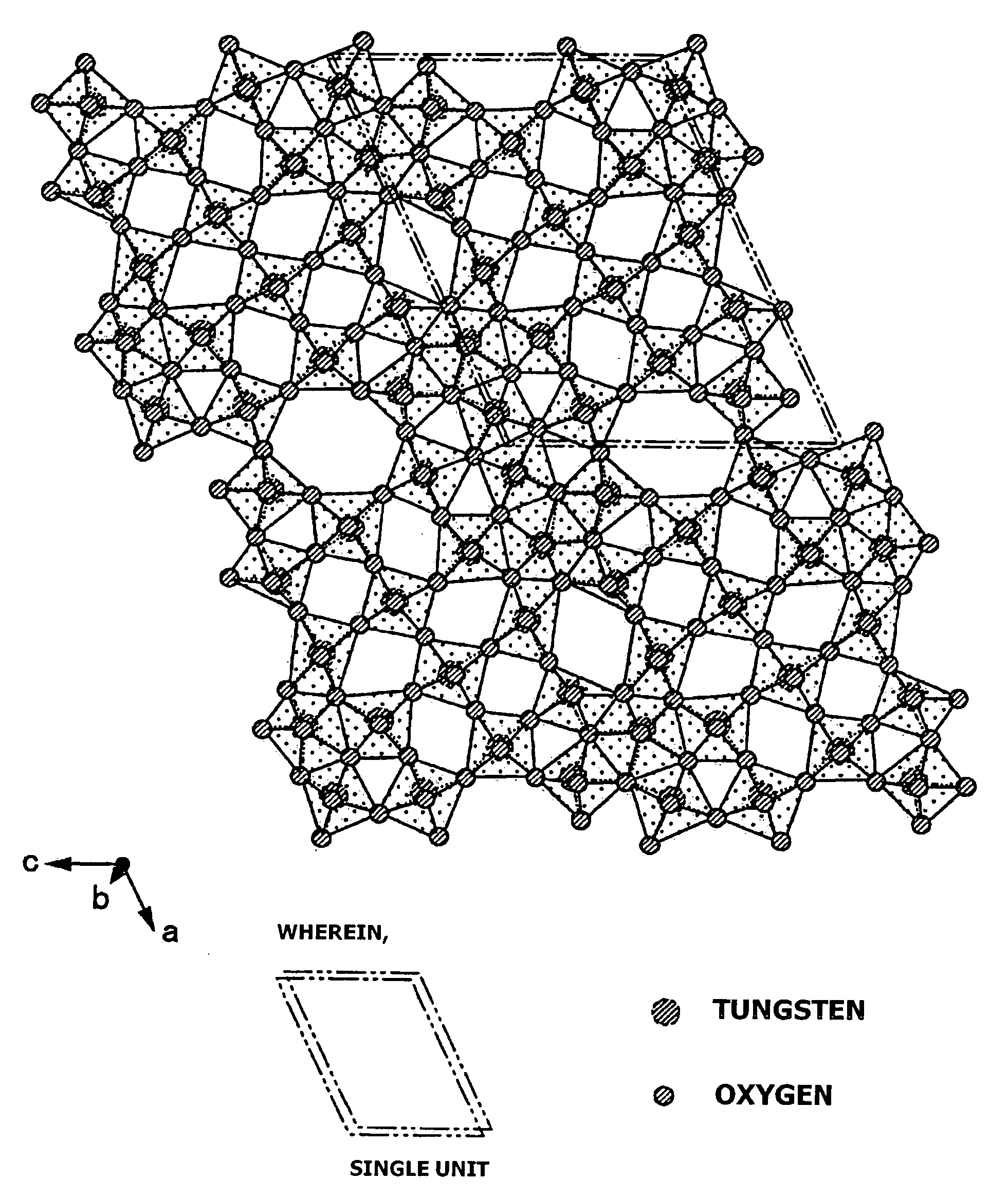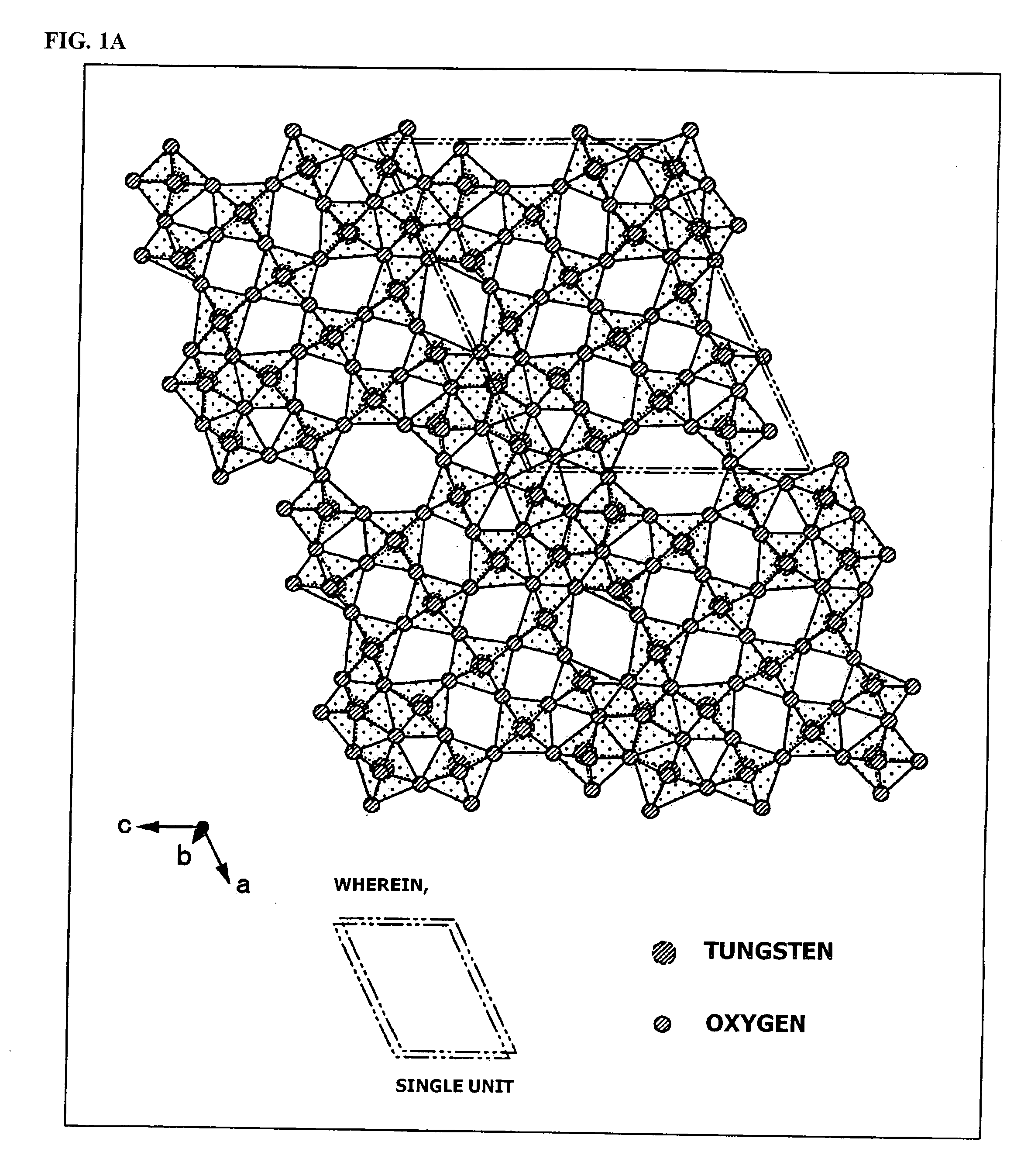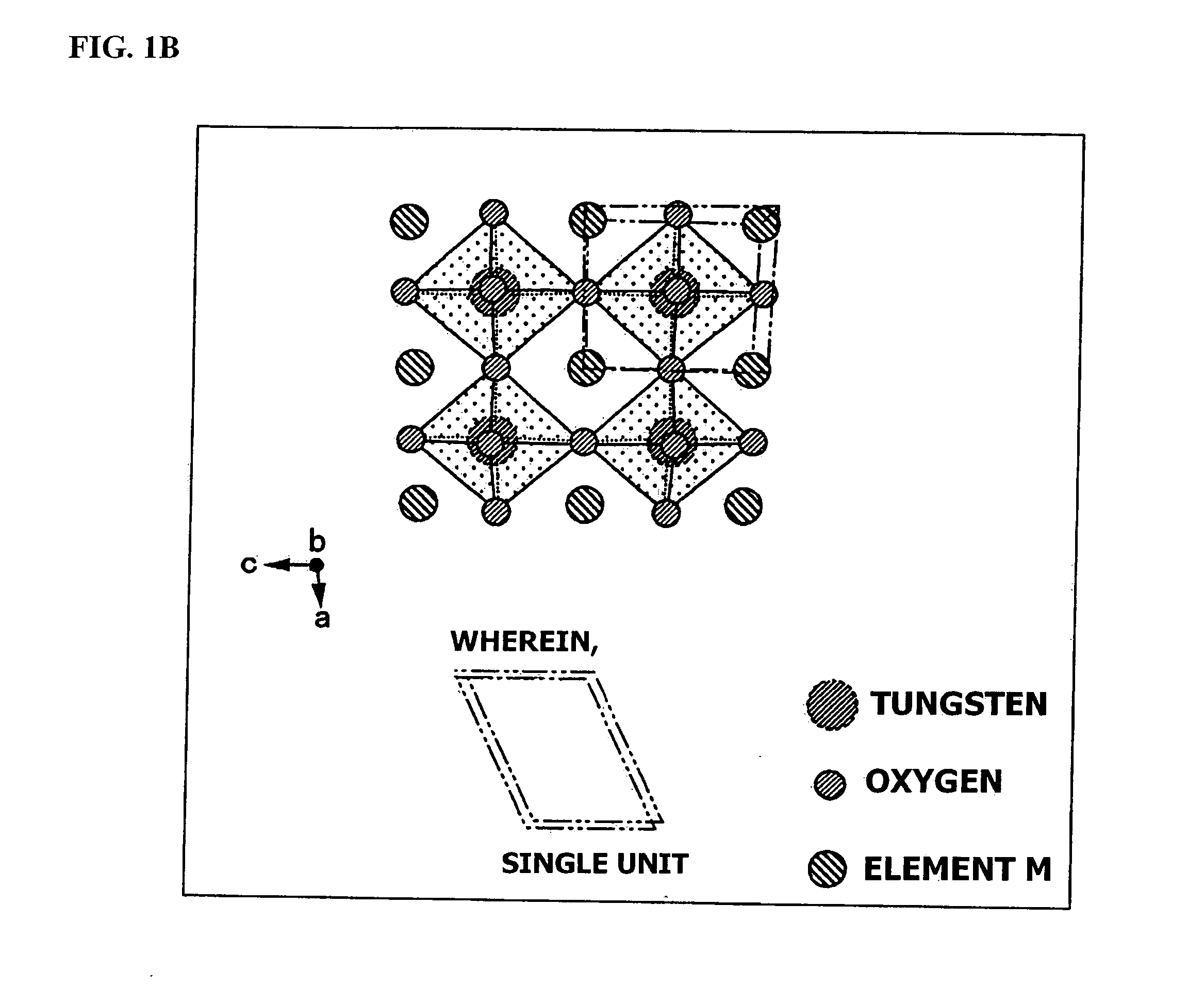Conductive particle, visible light transmissive particle dispersed conductor, method for producing same, transparent conductive thin film, method for producing same, transparent conductive article using same, and infrared shielding article
a technology of visible light transmissive particles and conductors, which is applied in the field of infrared shielding nanoparticles, can solve the problems of limiting the cost reduction of ito, difficult to respond to the recent wider range of needs, and the recent downward trend of costs of recent display apparatuses, etc., and achieve excellent electrical conductivity, excellent light transmittance, excellent electrical conductivity
- Summary
- Abstract
- Description
- Claims
- Application Information
AI Technical Summary
Benefits of technology
Problems solved by technology
Method used
Image
Examples
example 1
[0296] Tungsten hexachloride was dissolved in ethanol, and the solution was dried at 130° C. to obtain a hydrate of tungsten oxide. This starting material was heated at 550° C. for one hour in a reducing atmosphere (volume ratio: argon / hydrogen=95 / 5), cooled to room temperature, and then heated at 800° C. for one hour in an argon atmosphere, thus producing the target tungsten oxide powder.
[0297] As a result of determining the crystal phase via X-ray diffraction, the resulting powder was determined to be a so-called Magneli phase W18O49 (WO2.72). FIGS. 4A and 4B show the result of viewing the shape of the powder via SEM. In this case, FIG. 4A is an SEM image of W18O49 at a magnification of 10,000, and FIG. 4B is an SEM image at a magnification of 3,000.
[0298] At this time, acicular crystals were observed, as shown in FIGS. 4A and 4B. Also, the pressed powder resistance of the particles measured under a pressure of 9.8 MPa was 0.085 Ω·cm, and good electrical conductivity was confirm...
example 2
[0301] An aqueous solution of ammonium metatungstate was dried at 130° C. to obtain a compound composed of tungsten oxide in the form of a powder. This starting material was heated at 550° C. for one hour in a reducing atmosphere (volume ratio: argon / hydrogen=97 / 3), cooled to room temperature, and then heated at 800° C. for one hour in an argon atmosphere to prepare tungsten oxide powder. As a result of determining the crystal phase via X-ray diffraction, a crystal phase W18O49 (WO2.72) was observed. In this manner, the same electroconductive particles as in Example 1 were successfully fabricated even when ammonium metatungstate was used as the tungsten compound starting material. The pressed powder resistance of the powder electroconductive particles measured under a pressure of 9.8 MPa was 0.089 Ω·cm, and good electrical conductivity was confirmed.
example 3
[0302] Cesium carbonate and tungstic acid were mixed using a mortar in a Cs / W molar ratio of 0.33. This starting material was heated at 600° C. for two hours in a reducing atmosphere (volume ratio: argon / hydrogen=97 / 3), cooled to room temperature, and then heated at 800° C. for one hour in an argon atmosphere to prepare a powder composed of Cs0.33WO3 electroconductive particles. As a result of determining the crystal phase via X-ray diffraction, this Cs0.33WO3 was found to be hexagonal tungsten bronze. The resulting powder form of the electroconductive particles was viewed using an SEM. The results are shown in FIG. 5. FIG. 5 is an SEM image of Cs0.33WO3 at a magnification of 10,000.
[0303] At this time, crystals shaped as hexagonal pillars were observed, as shown in FIG. 5. The pressed powder resistance of the electroconductive particle powder measured under a pressure of 9.8 MPa was 0.013 Ω·cm, and good electrical conductivity was confirmed.
[0304] Next, 20 parts by weight of the ...
PUM
| Property | Measurement | Unit |
|---|---|---|
| particle diameter | aaaaa | aaaaa |
| pressure | aaaaa | aaaaa |
| length | aaaaa | aaaaa |
Abstract
Description
Claims
Application Information
 Login to View More
Login to View More - R&D
- Intellectual Property
- Life Sciences
- Materials
- Tech Scout
- Unparalleled Data Quality
- Higher Quality Content
- 60% Fewer Hallucinations
Browse by: Latest US Patents, China's latest patents, Technical Efficacy Thesaurus, Application Domain, Technology Topic, Popular Technical Reports.
© 2025 PatSnap. All rights reserved.Legal|Privacy policy|Modern Slavery Act Transparency Statement|Sitemap|About US| Contact US: help@patsnap.com



